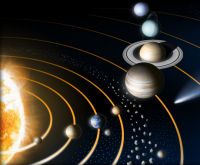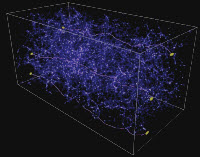 In this month's edition:
In this month's edition:
- Planetary Skylights: Mars, Jupiter, Saturn, Venus
- Summer Solstice
- Twilight and Shadow
- Noctilucent Cloud
- June 2017 Sky Charts
- Log in to post comments
 In this month's edition:
In this month's edition:
 As you will know Paul Money had to cancel his talk on May 9th due to family illness. Paul sends his apologies and will reschedule as soon as he is able to. Fortunately Paul had given us a couple of days notice, allowing time for cancellation notices to be placed on the website and in the local media. Stop Press... [Read more about Paul Money]
As you will know Paul Money had to cancel his talk on May 9th due to family illness. Paul sends his apologies and will reschedule as soon as he is able to. Fortunately Paul had given us a couple of days notice, allowing time for cancellation notices to be placed on the website and in the local media. Stop Press... [Read more about Paul Money]
 Our planned star party on May 27th from the West Cliff, unfortunately fell victim to the thundery breakdown of what had been a period of fine, settled and warm weather during the week beforehand. [Read more about Event Horizon]
Our planned star party on May 27th from the West Cliff, unfortunately fell victim to the thundery breakdown of what had been a period of fine, settled and warm weather during the week beforehand. [Read more about Event Horizon]
 Many WDAS Members will have heard Sean Paling’s talk about hunting for Dark Matter in Boulby Mine, and followed updates of how successive experiments are progressing. So let’s take another look at Dark Matter: why we think it’s there and what it is.
Many WDAS Members will have heard Sean Paling’s talk about hunting for Dark Matter in Boulby Mine, and followed updates of how successive experiments are progressing. So let’s take another look at Dark Matter: why we think it’s there and what it is.
In our own solar system Mercury is moving faster than Earth, and Earth faster than Neptune. That’s because their speed is a measure of the Sun’s gravitational pull, which is stronger the closer you are to it. Hallelujah… the laws of physics are working!
But wait, the stars at the edge of a galaxy rotate around the super-massive blackhole at its heart, at more-or-less the same speed as stars much closer in. That should be impossible! In fact, galaxies are rotating so fast that – by rights – they should be flying apart. Unless… there’s a whole lot more mass spread around the galaxy that we can’t see. What would be a good name for it..?
And since that discovery, the evidence for Dark Matter has just been piling-up. Everything, from the evolution of the entire universe to the leftover signals from the Big Bang, seems to scream, “DARK MATTER.” Astronomers are now able to model the Universe and put a figure on how much of it there is… about 84% of actual matter in the Universe is Dark Matter. And since it responds to gravity, we can also map its location and its speed, and we find it’s actually shaped the Universe. Yes, Dark Matter is responsible for the large-scale filament structure of our Universe. [Read more about Where are we with Dark Matter?]